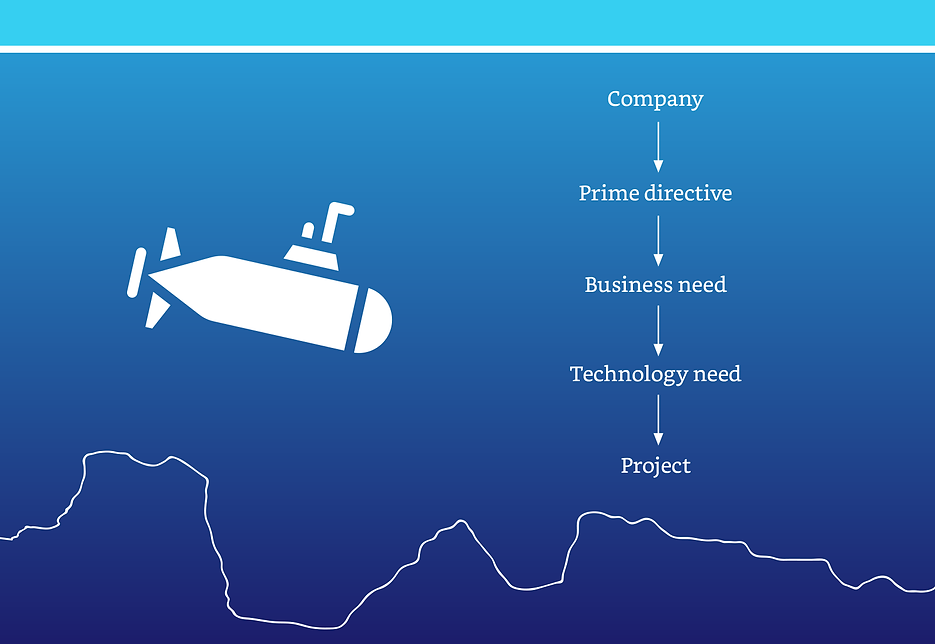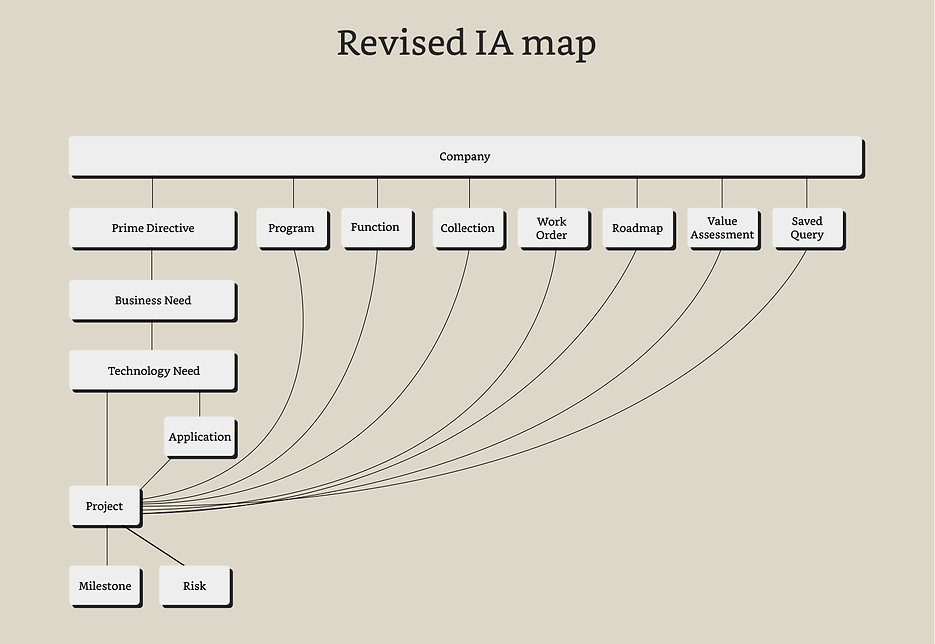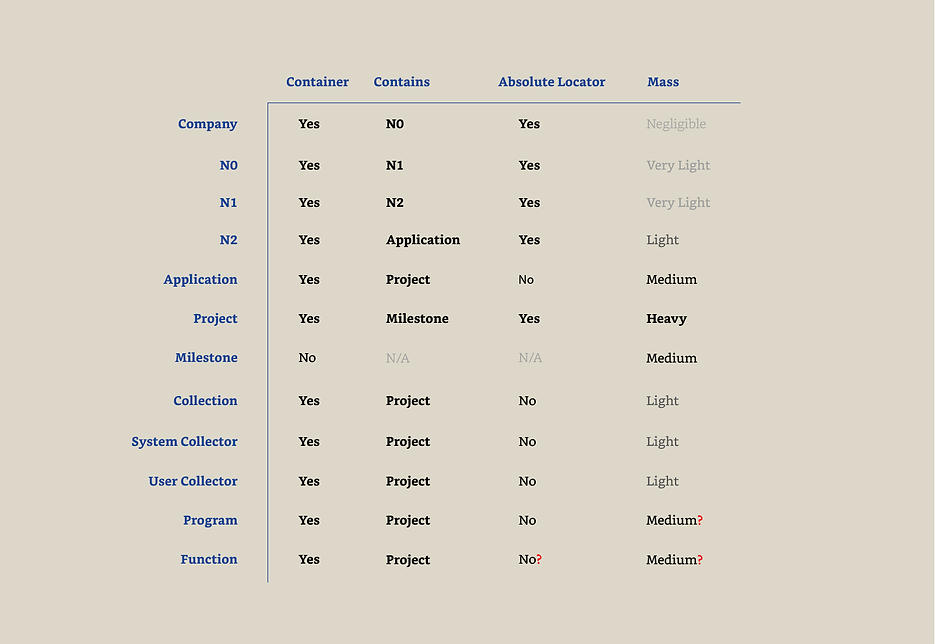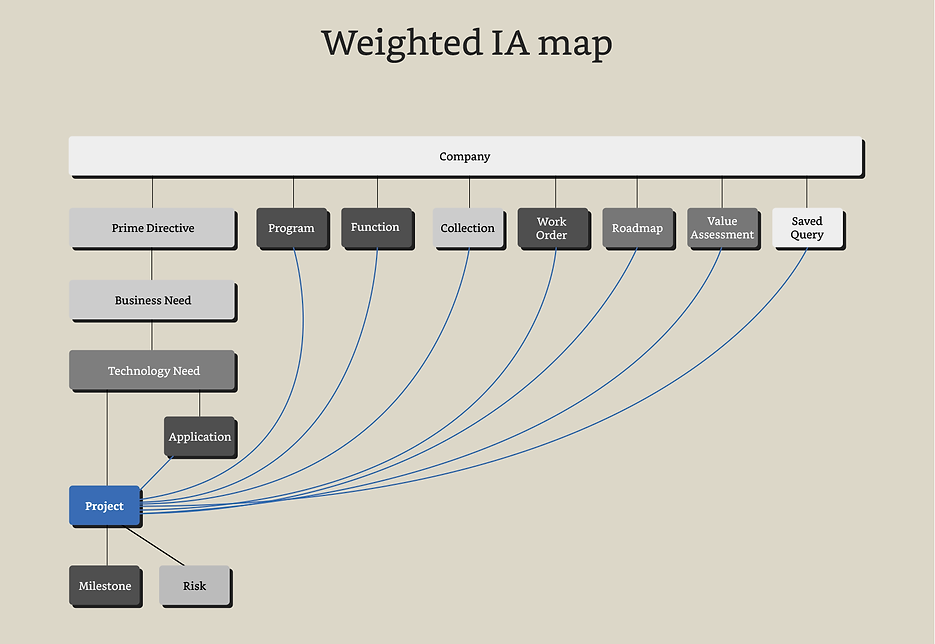Step 3: Mapped out the organization

Took early steps to correct the IA before it haunted us
The original information architecture was very simple, with each level having a one-to-many relationship with its child level. This allowed us to design a navigation scheme that was automatically intuitive since the depth of information that the user is viewing is a direct function of the level of information hierarchy. I refer to it as the "submarine model" because the user's viewport is like a submarine diving into an ocean of data. Because it uses a spatial metaphor of moving through data, it is instantly intuitive, and allowed us to create the simple and elegant design which won us the contract, however now it may have been a liability that could hem us in if we didn't quickly address it.

Identified new objects and relationships
My work studying the business processes of the company also provided an insight into the information topography. There were another of data objects consisting of the already known organizational clades, the projects, but also the aircraft programs, roadmaps, and more. I mapped these objects out as well as their relation to each other. What you see above is a simplified map since the actual full IA is confidential.

Added metadata to the IA
I then inventoried the characteristics of each data object, including what I call their "mass" which is a measure of real-world significance. An object that is merely an administrative category is light in mass, while an object with budget or personnel is higher in mass.

Delivered a complete IA map to enable further design
I put all the information together into an updated, weighted IA map that reflected the types of information that the system could capture, as well as those that it might potentially capture in the future. This allowed us to plan ahead for the major navigational changes to accommodate this new information reality as well as the challenges of selling the changes to the client.
